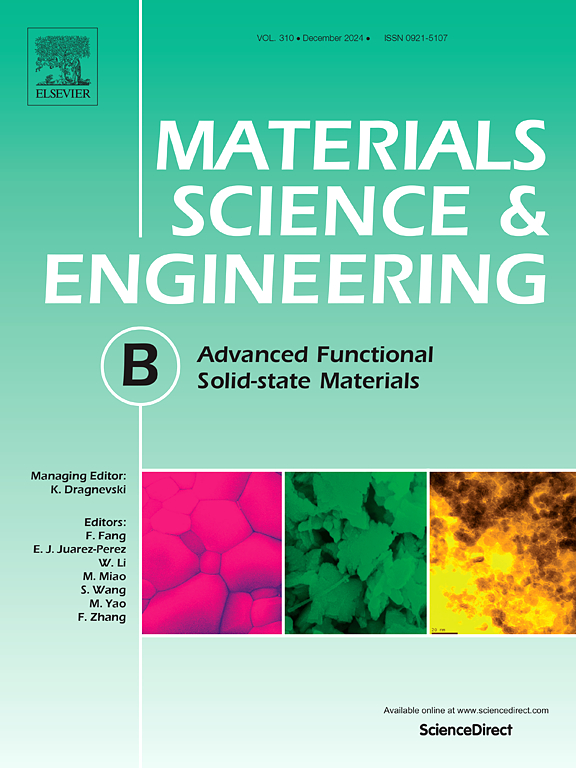Strategic synthesis of biowaste-derived magnetic hydrochar for adsorption and photocatalytic removal of Chlorpyrifos herbicides from simulated wastewater
IF 3.9
3区 材料科学
Q2 MATERIALS SCIENCE, MULTIDISCIPLINARY
引用次数: 0
Abstract
This study presents the synthesis of a magnetic hydrochar composite (ZMMHC) from Zea mays biowaste, integrating CoFe2O4 nanoparticles (5–20 wt%). Characterization techniques included BET, XRD, FESEM, HRTEM etc. The ZMMHC composite with 15 wt% CoFe2O4 exhibited the highest surface area of 162.89 m2/g. Saturation magnetization (Ms) values for composites with 5 %, 10 %, and 15 wt% CoFe2O4 were 34.70 emu/g, 42.73 emu/g, and 54.40 emu/g, respectively, indicating magnetic properties. The composite displayed a band gap of 2.18 eV, enabling visible light activity. For wastewater, ZMMHC achieved 97.4 % CPF adsorption in 120 min at pH 6.0, following the Langmuir model (R2 = 0.99). Photocatalytic degradation removed 94.2 % CPF in 180 min, with the rate k1 0.0161 min-1. Radical scavenging experiment confirmed the photoexcited electrons as key contributors to CPF degradation. Its high surface area, magnetization, visible-light activity, and reusability make it promising for wastewater treatment.
求助全文
约1分钟内获得全文
求助全文
来源期刊

Materials Science and Engineering: B
工程技术-材料科学:综合
CiteScore
5.60
自引率
2.80%
发文量
481
审稿时长
3.5 months
期刊介绍:
The journal provides an international medium for the publication of theoretical and experimental studies and reviews related to the electronic, electrochemical, ionic, magnetic, optical, and biosensing properties of solid state materials in bulk, thin film and particulate forms. Papers dealing with synthesis, processing, characterization, structure, physical properties and computational aspects of nano-crystalline, crystalline, amorphous and glassy forms of ceramics, semiconductors, layered insertion compounds, low-dimensional compounds and systems, fast-ion conductors, polymers and dielectrics are viewed as suitable for publication. Articles focused on nano-structured aspects of these advanced solid-state materials will also be considered suitable.
 求助内容:
求助内容: 应助结果提醒方式:
应助结果提醒方式:


